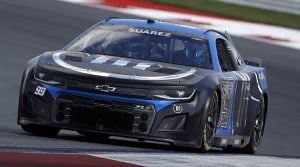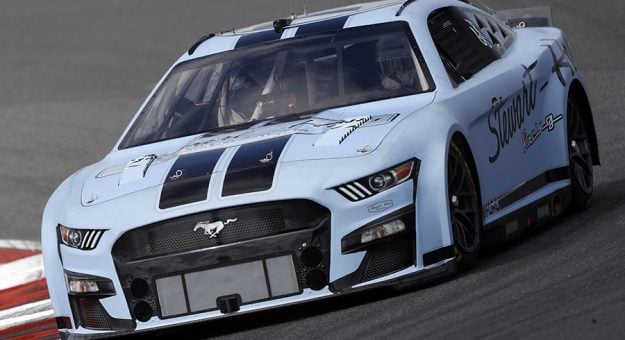Editor’s Note: This is the third in a series of stories about NASCAR’s Next Gen race cars and how teams are preparing for the introduction of the newest evolution of NASCAR stock cars.
It comes packaged in two black binders, the smaller one totaling 102 pages.
While the cover has a fancy picture to liven things up, it doesn’t have a flashy title.
Located between the logos for Dallara and the NASCAR Cup Series, simple black letters read:
“NASCAR Next Gen Cup Series – Parts Book.”
Inside are diagrams. Lots of them.
The diagrams include how to put together a “Chassis – Front Clip,” “Underwing” and “Bodywork – Common Closeout Panels.”
They’re directions for building NASCAR’s future, which effectively started with the end of Sunday’s NASCAR Cup Series season finale at Phoenix Raceway.
But before we get to the future, the past must first be put to bed.
Future Starts Now
Brian Murphy, assistant associate shop foreman for Stewart-Haas Racing, believes the Next Gen car and what it represents for NASCAR in the grand scheme of motorsports, is something that had to happen.
“This era of unlimited resources and uncontrolled spending, it just had to end,” Murphy told SPEED SPORT. “It wasn’t a sustainable business model for the sport.”

That doesn’t take away from the fact that the conclusion of season and the end of Gen 6 made for a “very emotional time” for Murphy and others who have made careers from preparing race cars.
The Cup Series’ move from metal bodies cars to a car with a more durable composite body, most of which is being built and supplied by Five Star Race Car Bodies, is the one that affects people with Murphy’s background the most. He used to work for a company that fabricated bodies for Kyle Busch Motorsports and ThorSport Racing. He joined Stewart-Haas Racing in 2015, going from a front-end fabricator to a travel fabricator before starting his current role in 2020.
Murphy has expressed disappointment in a lack of effort in educating NASCAR’s fanbase on what went into preparing and repairing a team’s massive fleet of cars.
“Not only the damage that you encounter just making one lap around the race track, but also meeting NASCAR’s strict tolerances,” Murphy said. “There’s so much to do at a race track, even if they don’t hit a wall.”
For Murphy, the biggest thing he’ll miss about the Gen 6 is the “creativity it took” to mold them into race-ready machines.
“Even though the box that NASCAR gave teams appeared to be very small, in all reality, it was incredibly massive,” Murphy said. “Teams found advantages in ways never thought possible, even with the tolerances we’re held to.”
Those sentiments were echoed during the championship weekend by Joe Gibbs Racing’s Chris Gabehart. The crew chief on Denny Hamlin’s No. 11 Toyota said the sport “was built on artistry” of the cars.
“These cars are works of art,” Gabehart added. “There’s no such thing as perfection. And the people who build them could spend endless hours making them a little more perfect each and every minute of each and every day. And, you know, to a large degree that’s dying. I think it’s honestly unfortunate. I’m not saying I agree or disagree with it. But racing was built on building the fastest car you knew how to build, and then driving it as perfect as you knew how to drive it. And we’re certainly losing one very significant aspect of that.”
Murphy said, “It takes highly-skilled people to assemble and build these cars.”
Click below to continue reading.
